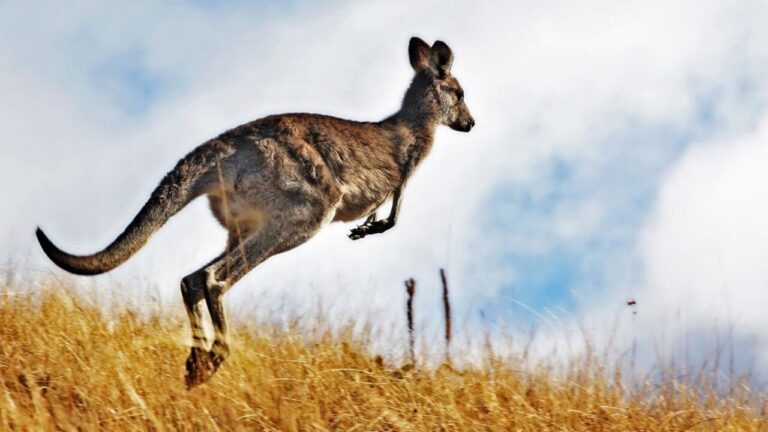Interesting Facts: Porcupines In Georgia
Imagine wandering through the lush forests of Georgia, where the sun filters through vibrant leaves and the air is alive with the sounds of nature. Suddenly, you catch a glimpse of an unexpected resident: a porcupine! While these prickly creatures are often associated with distant northern landscapes, they have quietly made their home in Georgia’s diverse ecosystems. With their quills shimmering like tiny spears in the dappled sunlight, porcupines embody both curiosity and caution as they navigate their surroundings.
In this article, we’ll delve into the fascinating world of porcupines in Georgia, exploring their habits, habitats, and surprising adaptability to life in the Peach State. From their distinctive diets that include everything from bark to berries to their unique defense mechanisms against predators, these nocturnal mammals are more than just spiny enigmas; they play a vital role in maintaining ecological balance. Join us on this journey to uncover the truth about porcupines thriving amidst Georgia’s rich flora and fauna, because sometimes, it’s the most unexpected residents that capture our imagination.
What States Do Porcupines Live In?
Porcupines are primarily found across North America, inhabiting a variety of environments. In the United States, they are most commonly located in the northern regions, including states such as Alaska, Washington, Oregon, and parts of the Rocky Mountain states like Montana and Wyoming. They can also be found in the northeastern states like Maine and New Hampshire. Their preference for wooded areas means they thrive in forests, shrublands, and even urban settings where trees are present.
In addition to these regions, porcupines have a range that extends into Canada and parts of Mexico. The North American porcupine (Erethizon dorsatum) is particularly adaptable and can be seen in diverse habitats from coastal forests to mountainous terrains. While they may not be distributed evenly across all states, their presence is notable wherever suitable habitats exist.
Do Porcupines live in Georgia?
Porcupines, often viewed as solitary and elusive creatures, actually do call Georgia home. While these fascinating rodents are typically associated with the colder regions of North America, their adaptable nature allows them to thrive in the diverse habitats found throughout Georgia’s forests and woodlands. Spotting a porcupine in this state might be rare, but they’re more prevalent than many realize, especially in areas where wooded landscapes provide ample food sources like bark, leaves, and fruits.

Interestingly, porcupines are predominantly nocturnal and tend to be active during the night. This behavior not only aids their survival against predators but also adds an element of mystery to wildlife encounters in Georgia. Conservation efforts have made strides toward preserving their habitats amidst urban development, fostering a sense of connection between Georgians and this unique species.
Are There Porcupines in Georgia?
Yes, there are porcupines in Georgia, although they are not as common as in some other regions of the United States. These nocturnal mammals can be found primarily in the northern parts of the state, particularly in forested areas where they have access to their preferred food sources like bark and foliage.
Where To Find Georgia Porcupines?
Georgia porcupines, also known as the North American porcupine (Erethizon dorsatum), can typically be found in wooded areas throughout the state. They prefer habitats that offer plenty of trees for climbing and feeding, such as deciduous or coniferous forests. Look for them in regions with abundant vegetation, especially near rivers or streams where they can find water and a variety of food sources like leaves, bark, and fruits.
If you’re interested in spotting these nocturnal creatures, your best bet is to head out during the evening or early morning hours when they are most active. National parks and wildlife management areas in Georgia, such as Chattahoochee National Forest or Tallulah Gorge State Park, are great places to explore. Remember to keep a respectful distance if you do encounter a porcupine; while they are generally not aggressive, their quills can pose a danger if threatened.

Also read: Are There Badgers In Michigan?
What To Do If A Porcupine Is In Your Yard?
Encountering a porcupine in your yard can be surprising, but it’s essential to approach the situation with caution and respect for wildlife. First, give the porcupine space; they’re not aggressive by nature but will defend themselves if they feel threatened. Observe from a distance, as this will allow you to appreciate its unique role in the ecosystem while also ensuring your safety.
To humanely encourage the porcupine to leave, create an inviting escape route. Clear away any food sources like fallen fruit or garden vegetables that might attract it and gently guide it towards brushy areas where it feels safer. If you’re concerned about potential damage or conflicts with pets, consider erecting barriers or using motion-activated lights, these can effectively deter curious critters without harm. Ultimately, understanding and respecting their natural behavior can turn an unexpected visit into a memorable moment of connection with nature!
Do Porcupines Hurt You?
Porcupines can indeed hurt you, but they don’t actively attack. Their primary defense mechanism is their quills, which are sharp and can easily embed in the skin if a porcupine feels threatened. If you approach one too closely or try to handle it, you risk getting pricked by these quills, which can be quite painful and may require medical attention to remove.
However, porcupines are generally non-aggressive creatures that prefer to avoid confrontation. They usually rely on their quills for protection rather than attacking. If you keep your distance and respect their space, you’re unlikely to have any issues with them.
Does Porcupine have a Built-in Protection System
Porcupines are fascinating creatures, not just for their prickly exterior but for the sophisticated protection systems they employ in the wild. Their quills, a signature feature, are more than just spines; they’re an evolutionary marvel. Each quill is barbed and can easily detach when a predator makes contact, embedding itself into the attacker and creating a painful reminder to stay away. This clever defense mechanism allows porcupines to fend off threats with minimal effort.

Moreover, porcupines are not just dependent on their armor; they exhibit remarkable behavioral strategies that enhance their safety. When threatened, these nocturnal animals do not flee; instead, they often turn their backs and raise their quills, a clear warning sign to potential predators. This passive yet assertive display can deter even the most determined attackers.
Coupled with their ability to climb trees and navigate dense foliage, porcupines have evolved an impressive set of skills that go beyond simple physical defenses; it’s a holistic survival strategy shaped by millions of years of natural selection.
Readmore: Explore Quail In Michigan.
Summary
Porcupines have established a unique presence in Georgia’s diverse ecosystems, showcasing their adaptability and resilience. As these fascinating creatures continue to thrive in the region, they play a vital role in maintaining ecological balance. Understanding their habits and habitats can foster greater appreciation for wildlife conservation efforts. By raising awareness about the importance of porcupines, we can help protect their natural environment. Let’s take action to ensure that future generations can also enjoy the wonders of Georgia’s wildlife.
FAQs
Where do porcupines live in the us?
Porcupines are primarily found in the northern and western regions of the United States. They thrive in diverse habitats, including forests, woodlands, and even mountainous areas. You can commonly spot them in states like Maine, Michigan, and Washington, where they prefer environments rich in trees for climbing and feeding. In addition to these areas, porcupines can also be found in parts of the Rocky Mountains and the Appalachian region.
What do porcupines eat?
Porcupines are primarily herbivores, and their diet mainly consists of a variety of plant materials. They enjoy eating leaves, bark, fruits, nuts, and roots. In particular, they have a preference for the inner bark of trees, which provides them with essential nutrients. Some common tree species that porcupines favor include pine, cedar, and aspen. In addition to their plant-based diet, porcupines may occasionally consume other organic materials such as agricultural crops or even carrion when food is scarce.
- Discover Top 9 White Birds in Florida (With Pictures) - November 7, 2024
- Discover Top 16 Black Birds In South Carolina (With Pictures) - November 6, 2024
- Explore Top 18 Most Famous Yellow Birds in Arizona (With Pictures) - November 5, 2024







